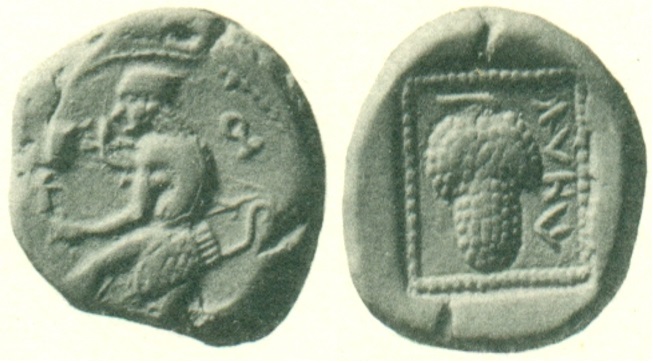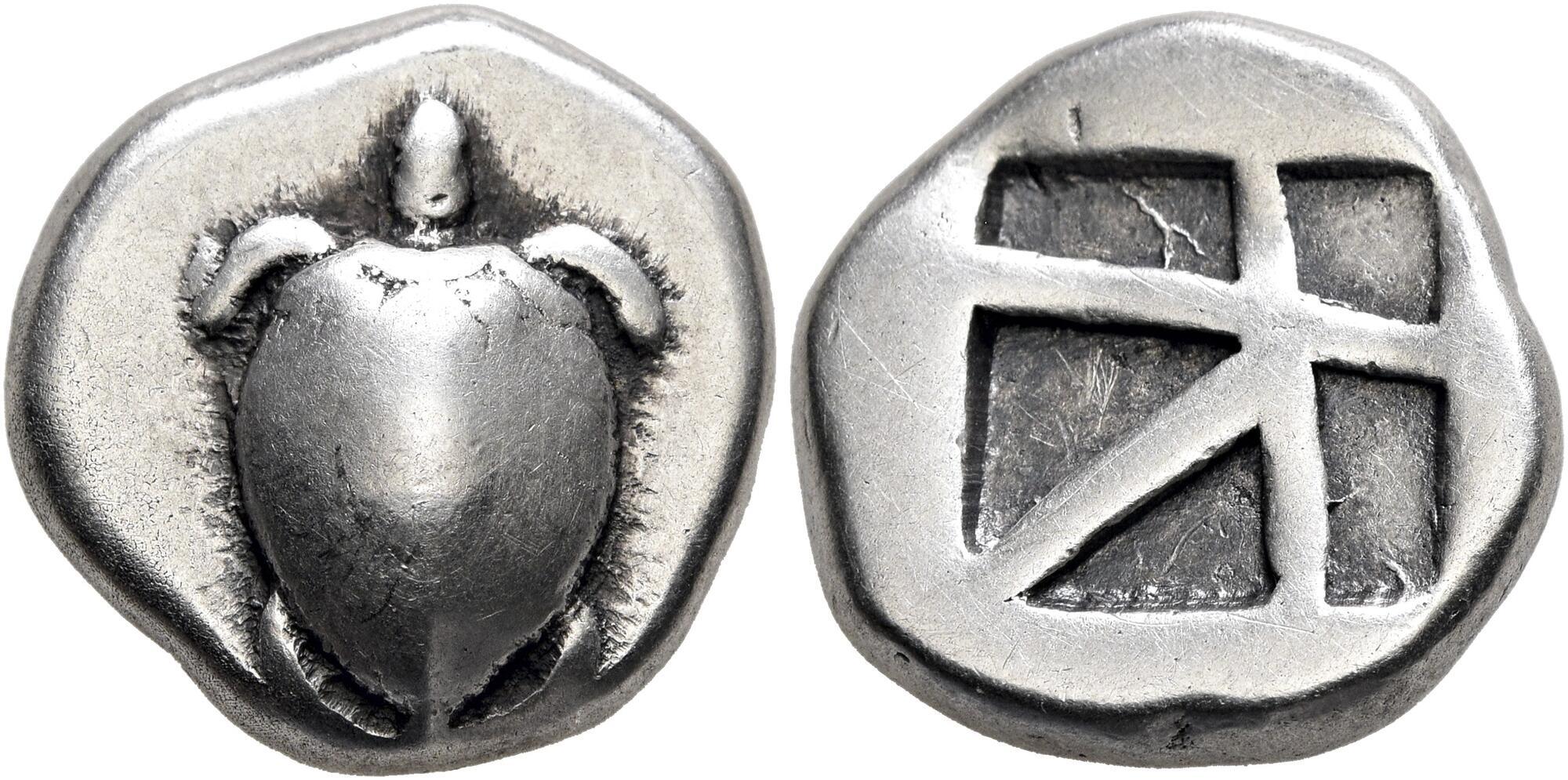440 BCE - 410 BCE | Aramaic letters (meaning “band”, “company”)
Overstriking coin
Soli_3124_London, _BM.jpg
Description
| ObverseInscription or printing placed on the obverse.:
|
Amazon kneeling left, quiver and bowcase at her side, holding bow. Border of dots.
|
ReverseInscription or printing placed on the reverse.:
|
Aramaic letters (meaning “band”, “company”) (Aramaic) Bunch of grapes within dotted incuse square.
|
Mint and issuing power
| MintIdentifies the place of manufacture or issue of a numismatic object.:
|
Soli-Pompeiopolis (Cilicia)
|
Ancient regionAncient region.
|
Cilicia
|
Modern countryModern country: Turkey
|
AuthorityIdentifies the issuing power. The authority can be "pretended" when the name or the portrait of X is on the coin but he/she was not the issuing power. It can also be "uncertain" when there is no mention of X on the coin but he/she was the issuing power according to the historical sources:
|
Persian Empire
|
Chronology
| FromIdentifies the initial date in a range assigned in a numismatic context. 440 BCE toIdentifies the final date in a range assigned in a numismatic context.. 410 BCE
|
Classical 480-323 BC  periodTime period of the numismatic object. periodTime period of the numismatic object.
|
Physical description
MetalThe physical material (usually metal) from which an object is made.: Silver 
|
WeightWeight of the numismatic object (in grams). in grams: 10.7410.74 g <br />10,740 mg <br />
|
DenominationTerm indicating the value of a numismatic object. Examples: tetradrachm, chalkous, denarius.: double siglos 
|
|
|
|
StandardStandard.: Persian
|
References
| Coin referenceReference of the Coin:
|
Robinson 1948, p. 56-58, pl. V, 10, Callataÿ 2018b, p. 144, n° 31
|
Coin series referenceReference to coin series study:
|
Robinson 19481Robinson 1948, p. 56-58, pl. V, 10, SNG France 22SNG France 2, n° 124-125, Callataÿ 2018b3Callataÿ 2018b, p. 144, n° 31
|
| Coin series web referenceCoin series web references:
|
|
Description
| ObverseInscription or printing placed on the obverse.:
|
Sea turtle
|
ReverseInscription or printing placed on the reverse.:
|
Incuse square with skew pattern
|
Mint and issuing power
| MintIdentifies the place of manufacture or issue of a numismatic object. ᵖ:
|
Aegina
|
Ancient regionAncient region. ᵖ
|
Attica
|
Modern countryModern country: Greece
|
AuthorityIdentifies the authority in whose name (explicitly or implicitly) a numismatic object was issued. ᵖ:
|
|
Chronology
| FromIdentifies the initial date in a range assigned in a numismatic context. 480 BCE toIdentifies the final date in a range assigned in a numismatic context.. 457 BCE
|
Classical 480-323 BC  periodTime period of the numismatic object. periodTime period of the numismatic object.
|
Physical description
| DenominationTerm indicating the value of a numismatic object. Examples: tetradrachm, chalkous, denarius. ᵖ:
|
stater 
|
StandardStandard. ᵖ:
|
Aeginetic
|
References
| Frequency of overstrikesFrequency of overstrikes:
|
rare and spread
|
Level of confidenceLevel of confidence of the identification:
|
strong
|
| RemarksRemarks:
|
“traces of the turtle’s head and upper line of his shell are visible at five o’ clock on the obverse; but none of the incuse on the reverses”
|
References
- ^ Robinson 1948
- ^ Levante, Edoardo (1993), Sylloge nummorum graecorum. France 3. Cabinet des Médailles : Cilicie, Paris, BnF, xviii + 274 p., 103 pl.
- ^ Callataÿ, François de (2018), “Overstrikes on Pamphylian and Cilician silver sigloi (5th-4th c. BC)”, in O. Tekin (ed.), Proceedings of the Second International Congress of the Anatolian Monetary History and Numismatics in the Mediterranean World, 5-8 January 2017 Antalya, Antalya, 2018, p. 131-150.
- ^ Hoover, Oliver D. (2010), The Handbook of Greek Coinage Series, volume 6 : handbook of coins of the islands: Adriatic, Iionian, Thracian, Aegean, and Carpathian seas (excluding Crete and Cyprus), sixth to first centuries BC, Lancaster, 358 p.
- ^ Meadows, Andrew (forthcoming), Greek coinage in the Persian Empire: The Malayer 1934 Hoard (IGCH 1790).


